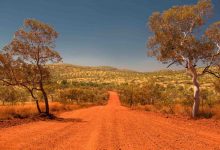The global oil giant BP is reportedly set to buy into the massive 26GW Asia Renewable Hub (AREH), one of the world’s biggest green hydrogen projects.
An announcement on the future of AREH has been expected this week, and late on Monday the Australian reported that BP would take a “major stake” in the project whose owners currently include Intercontinental Energy, CWP Global, Vestas and Macquarie Group.
According to The Australian, BP is set to formally announce the investment at the World Hydrogen Summit in Rotterdam this week.
That would make sense, given that WA hydrogen minister Alannah MacTiernan, one of the driving forces behind the green hydrogen industry in the state, is also attending that conference.
The emergence of BP in AREH would be a significant development for the project itself, which has previously targeted Japanese coal generators as one of the buyers of green ammonia produced from the project, and for BP itself.
According to The Australian, BP would take a stake of around 30 per cent in the project. BP and other partners in AREH declined to comment or confirm the story.
AREH is one of a number of wind and solar projects of unprecedented scale that are being developed in Australia, either for green hydrogen and green ammonia production, or direct export to Asia via sub-sea cables.
Many of the same partners in AREH are involved in a project twice the size – the 50GW Western Green Energy Hub located in the south of the state north and east of Esperance.
Iron ore billionaire Andrew Forrest is also reportedly pursuing land deals with farmers in the region, as part of his own ambitious plans to produce 15 million tonnes of green hydrogen a year.
Forrest is also involved with tech billionaire Mike Cannon-Brookes in the development of the world’s biggest solar and battery project being pursued by Sun Cable, with 20GW of solar and 42GWh battery storage mostly destined for Singapore.
Forrest’s green hydrogen plan – being pursued by Fortescue Future Industries, which has also revealed plans for a 5.4GW wind and solar project in the Pilbara – would require 150GW of hydrogen electrolysers and 450GW of wind and solar.
The AREH project proposes some 14GW of hydrogen electrolysers, powered by around 16GW of wind turbines and another 10GW of large scale solar.
It originally planned a sub-sea cable to south-east Asia, like Sun Cable, but has since changed tack to green ammonia. The choice of exporting molecules or electrons is one of the big debates about the future of the green hydrogen.
AREH became a federal electoral issue last year when environment minister Sussan Ley knocked back environmental approval, because of concerns about its impact on wetlands in and around 80 Mile Beach, but it has been pushed by the state government.










